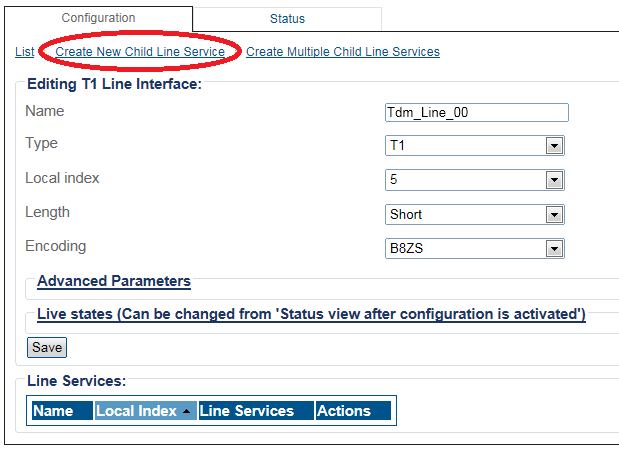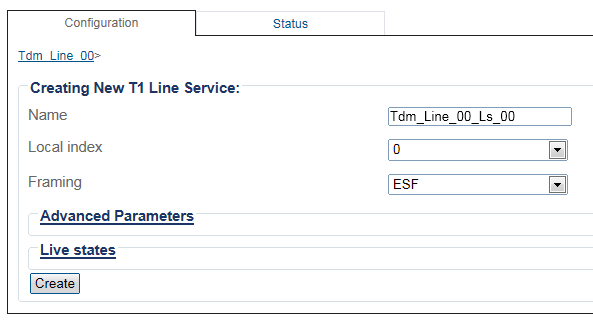Toolpack:Creating a Line Service C
From TBwiki
(Difference between revisions)
(Corrected steps 3 onwards because the aticle was showing line interface images and not line service) |
(→Applies to version(s): v2.8.) |
||
| Line 25: | Line 25: | ||
4- Enter a '''name''' for the new line service | 4- Enter a '''name''' for the new line service | ||
| − | * Select a line service '''type''' | + | * Select a line service '''type'''. |
| − | * Select an available '''local index''' | + | * Select an available '''local index'''. |
| − | * Select | + | * Select a '''framing'''mode. |
| − | * Click '''Create''' | + | * Click '''Create'''. |
[[Image:CreateLineService_2.png]] | [[Image:CreateLineService_2.png]] | ||
Latest revision as of 09:32, 24 July 2015
Applies to version(s): v2.8.
A line service defines the type of paylaod that a line interface carries or it defines another line service. The definition of a line service ends when it reaches the E1/J1/T1 line service.
The E1/J1/T1 line services are also known as trunks or spans.
To create a new line service:
1- Select TDM Line Interfaces from the navigation panel
2- Select the line interface for which you would like to create a line service.
3- Click Create new child line service
4- Enter a name for the new line service
- Select a line service type.
- Select an available local index.
- Select a framingmode.
- Click Create.
5- The new line service is displayed in the Line Services list
List of Parameters
Advanced Parameters




